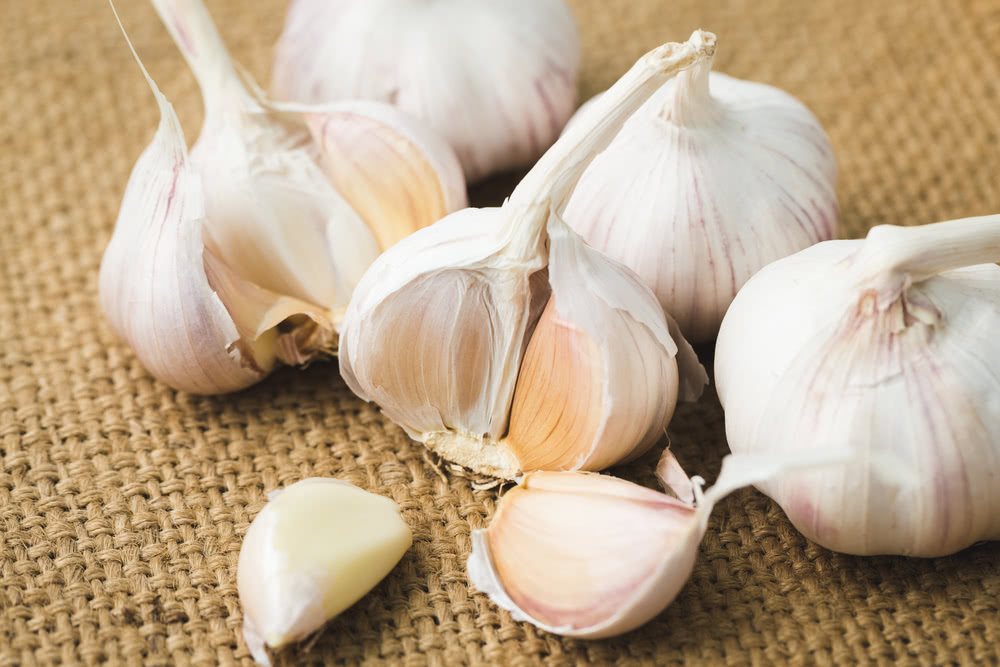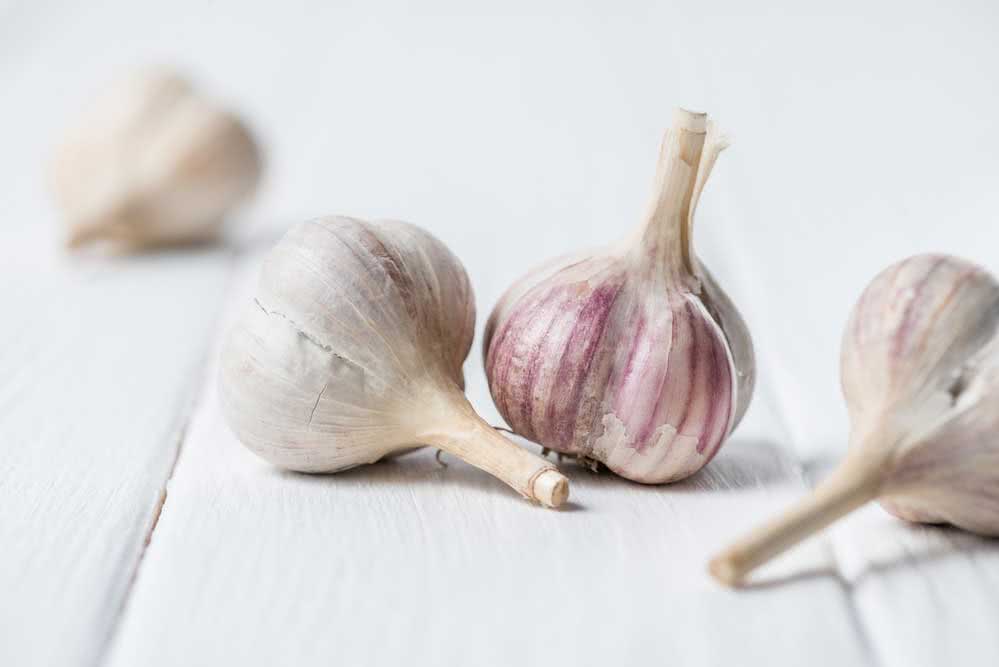Garlic is one of the most used spices in the recipes of any dish. Whether in everyday cooking, to give a special touch to rice and beans, or in more elaborate and reserved dishes for important occasions, garlic is the wildcard of any recipe. If you want to learn how to plant garlic and thus produce your own seasoning at home in a healthy and economical way, this article is for you!
Follow the reading and check out the tips we’ve separated.
What are the benefits of garlic?
In addition to serving as a seasoning and condiment in savory dishes, garlic has other properties and benefits that involve more than the characteristic flavor and aroma of this vegetable.
There are currently 8 varieties of garlic on the market and it is common for us to use only the cloves for cooking. But garlic is very versatile and it is also possible to make use of the leaves, flowers and stem of the plant for the preparation of food and tea recipes.
Research has shown that consuming garlic regularly has benefits for the cardiovascular and immune systems, so the medicinal use of garlic is on the list of benefits of vegetables. Nutritionists recommend the consumption of garlic to help reduce bad cholesterol, LDL, and increase good cholesterol, HDL.
In addition to all this, it is also possible to prepare garlic extracts to use as a pesticide to fight pests in home gardens and plantations.
Learning how to plant garlic will only benefit you and your entire family! Follow the reading and check out essential tips on how to start your own production.
How to plant garlic: where to start?

Garlic, or Allium Sativum as the scientific name of this plant says, is planted in the earth and forms a bulb composed of several segments, the bulbilli, which we popularly call teeth.
An adult garlic plant can measure 50cm to 1 meter and 20cm and usually grows in different regions of different climates.
Each head of garlic can have 5 to 55 cloves, depending on the size of each one! However, it is more common that the garlic we buy has about 15 to 20 medium bulbs in each bulb.
Below you will find some essential information on how to plant garlic.
Temperature and brightness
The cultivation of garlic is more recommended in the colder months, such as autumn and winter, as the bulbs do not usually grow at temperatures above 25 O C. Thus, the ideal is that the beginning and the middle of the cultivation cycle of a garlic plant should be done in milder climates, with temperatures between 0O C and 15 O C, so that the formation of the bulbs is done properly.
The following months, with warmer weather, are important for the correct maturation of garlic cloves. However, although the plant grows best in the cold, daily exposure to sunlight is necessary to ensure the proper growth of a healthy plant.
So, when choosing a place to install your vegetable garden, or to leave the pots of garlic, be aware of the brightness! For your plant to develop in a healthy way, it is ideal that it is exposed to direct sunlight for a few hours every day.
Soil and planting care
An important part of learning how to plant garlic is to know what type of soil is the most suitable for the growth of this vegetable and, also, how the care must be done when planting.
Garlic is a plant that has the ability to adapt to any type of soil, as it supports large pH variations and is able to grow with minimal nutrients. However, like any other plant, garlic also has ideal conditions for its faster and healthier growth.
Therefore, to plant garlic at home, choose a fertile and light soil, which has good nitrogen availability, is rich in organic matter and has good drainage. The ideal pH for the growth of this vegetable is between 6 and 6.5.
The depth you should plant each garlic clove is 3 to 5 centimeters and it is important that, when planting the garlic, you do not place the cloves too close to each other.
If you are going to plant more than one tooth, make sure that the spacing between them is at least 8 centimeters to ensure the necessary nutrient supply to each of the plants that will grow.
If you have a home garden and want to produce more, on several rows of plants, the spacing between the rows should be 20 to 50 centimeters.
How to plant garlic: simple step by step to make at home

You can plant garlic in a vegetable garden or flower bed, or plant it in a pot. The step by step will only differ in the preparation of the pot, so if you want to plant garlic directly on the ground, skip this step.
It is possible to adapt any bottle or container to make it suitable for planting garlic. If you want to know how to plant garlic in a pet bottle, it’s very easy! Just cut the top of the bottle with the help of scissors or a stylus and then drill a few holes in the base of the bottle to help drain the water.
With this simple procedure, you have transformed a pet bottle into a vase! And now, just follow the steps below to learn how to plant garlic.
1. Prepare the vase
Make a drainage layer at the bottom of the pot using gravel or stones for gardening. Pour a small amount of the chosen material into the pot and arrange the pebbles so that they form an even layer and facilitate the drainage of water at the bottom of the pot.
2. Prepare the substrate
If you are planting garlic in a pot, pour the appropriate substrate inside. Do not put soil to the top of the pot, it is recommended that you leave an indentation of approximately 5 cm between the soil and the top.
Now, regardless of whether you are planting in the pot or on the ground, the steps are the same. Make holes in the ground where you will insert the garlic cloves. Remember that the depth must be 3 to 5 cm and that the teeth must not be close to each other!
3. Do the planting
With the holes made, position the garlic cloves with the finer side facing up inside each one, then cover them with more substrate without overtightening. It is important that you leave the soft soil above the tooth to allow air to circulate and to germinate properly.
And it’s ready! Simple, isn’t it?
Irrigation
Now that you have learned the basic steps on how to plant garlic, it is important that you know how to irrigate your plants. The frequency and amount of water for irrigation will depend on the stage of cultivation in which the garlic plant is.
At the beginning, just after planting, keep the soil always very moist, making frequent watering and with plenty of water. When the bulbs start to grow, decrease the frequency of irrigation gradually and stop it completely 20 days before harvesting the garlic.
Harvest
Garlic can be harvested between 3 and 9 months after planting, the time will depend on the variety of garlic planted and also on the soil conditions and the local climate. You will know when your plant is good for harvesting when you notice that most of the leaves have become dry and yellow.
When you notice that this process has started to occur, remember to stop irrigation at least 20 days before harvesting. For this, always pay attention to your vegetables and plan the time to harvest to ensure the quality of the garlic!
Care after harvest
Garlic care does not end after harvest, as with most plants and vegetables. This is because the garlic heads must be exposed to sunlight so that they dry completely and the teeth become suitable for use as seasoning, condiment or any other.
Thus, after harvesting the bulbs, leave them exposed to sunlight for about 30 days until the structure is dry. Ideally, you should then place the garlic in the shade and wait for it to dry completely before using, a process that can take about 20 days.
With these tips that you just read, you will produce your own organic garlic at home and, with that, you will be able to enjoy all the benefits of this vegetable with great economy and quality. Who knows, your production is so successful that you decide to expand it and make the sale of garlic a way to complement your income!
Did you like our step by step and guidelines on how to plant garlic? Be sure to comment on your questions and suggestions!



